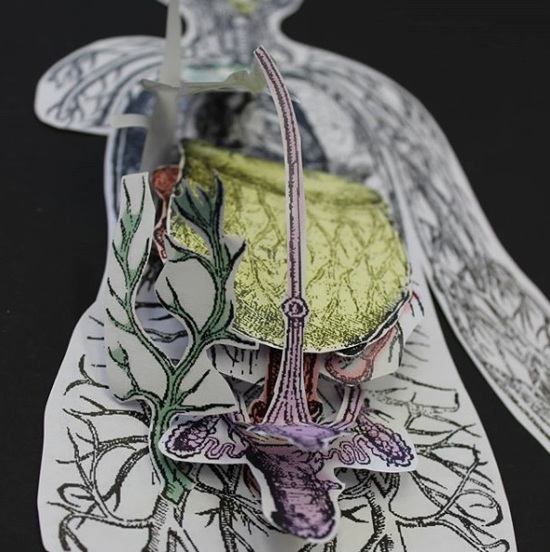During our anatomical exhibition Under the skin, we’ve run a few events in the library giving people a chance to make their own anatomical manikin: a sort-of lift-the-flaps anatomy lesson.
Now, in these times of lockdown, we’ve turned the activity into a downloadable kit, so you can have a go at home.
All the templates and instructions are available in this pdf, which you can download and save.
Download the anatomical manikin kit.

The minimum materials you need to have a go at making the model are:
- Paper
- A pen or pencil
- Some scissors or a craft knife
- Glue
It will be easier if you have access to a printer, but if you don’t, you can always try copying out the diagrams freehand.
The instructions sheet takes you through the steps one by one, and we hope you can work out what goes where! If you have a go at making the model, please do share your results with us on Twitter, Instagram or Facebook.

The kit is based on one of the most famous books in the history of medicine: Andreas Vesalius’ De humani corporis fabrica (‘On the fabric of the human body’). It was published in two versions in 1543: one complete edition of over 600 pages, and a summary (called the Epitome) with key text and images on just a couple of dozen pages. One book was aimed at rich physicians and book collectors, the other at students, surgeons and people on tighter incomes.
The model is based on two pages from the Epitome: one showing the female body, and the other the male body. The anatomy is nearly 500 years old, so it’s not quite the same as modern understandings of the human body. However, playing with this paper anatomical pieces can still teach us much about how the body is put together.
We hope you enjoy the kit.
Katie Birkwood, rare books and special collections librarian




